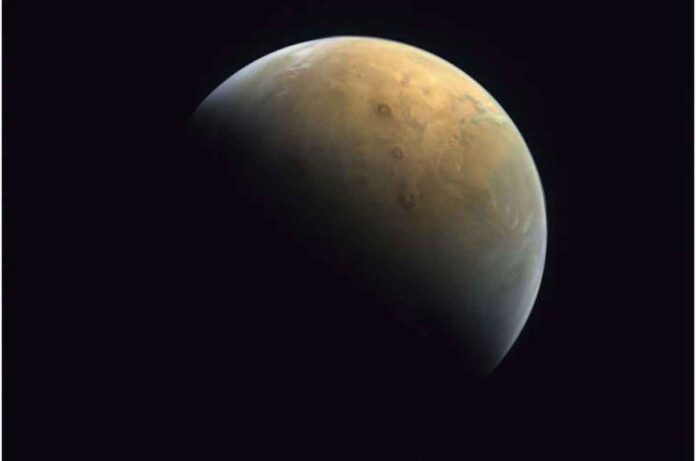According to French scientists, ancient Mars may have had an environment capable of supporting an underground world teeming with microscopic organisms.
The researchers concluded that if these simple life forms existed, they would have altered the atmosphere so profoundly that they would have triggered a Martian Ice Age and suffocated themselves.
The findings paint a bleak picture of the universe’s workings. Boris Sauterey, now a post-doctoral researcher at Sorbonne University, said that life—even simple life like microbes—”might actually commonly cause its own demise.”
The findings “are a little bleak, but I think they’re also very stimulating,” he wrote in an email. “They force us to reconsider how a biosphere and its planet interact.”
Sauterey and his colleagues used climate and terrain models to evaluate the habitability of the Martian crust some 4 billion years ago, when the red planet was thought to be flush with water and much more hospitable than it is today, according to a study published in the journal Nature Astronomy.
They hypothesised that hydrogen-consuming, methane-producing microbes could have thrived just beneath the surface back then, with several inches (a few tens of centimetres) of dirt protecting them from harsh incoming radiation. According to Sauterey, these organisms could have swarmed anywhere on Mars that was not covered by ice, just as they did on early Earth.
However, the early Mars’ presumably moist, warm climate would have been jeopardised by so much hydrogen sucked out of the thin, carbon dioxide-rich atmosphere, according to Sauterey. As temperatures dropped nearly 400 degrees Fahrenheit (200 degrees Celsius), any organisms on or near the surface would have buried deeper in an attempt to survive.

Given the nitrogen-dominated atmosphere, microbes on Earth may have helped maintain temperate conditions, according to the researchers.
The SETI Institute’s Kaveh Pahlevan stated that future models of Mars’ climate should take the French research into account.
Pahlevan also led a separate recent study that claimed Mars was born wet, with warm oceans that lasted millions of years. His team concluded that the atmosphere would have been dense and mostly hydrogen back then, acting as a heat-trapping greenhouse gas that was eventually transported to higher altitudes and lost to space.
According to Pahlevan, the French study looked at the climate effects of possible microbes when Mars’ atmosphere was dominated by carbon dioxide and thus is not applicable to earlier times.
“What their study shows is that if (this) life was present on Mars” during this earlier period, “they would have had a significant influence on the prevailing climate,” he added in an email.
What are the best places to look for traces of this previous life? The unexplored Hellas Planita, or plain, and Jezero Crater on the northwestern edge of IsidisPlanita, where NASA’s Perseverance rover is currently collecting rocks for return to Earth in a decade, are suggested by the French researchers.
Sauterey’s next task is to investigate the possibility of microbial life still existing deep within Mars.
“Could microorganisms descended from this primitive biosphere still inhabit Mars today?” he wondered. “And if so, where?”

